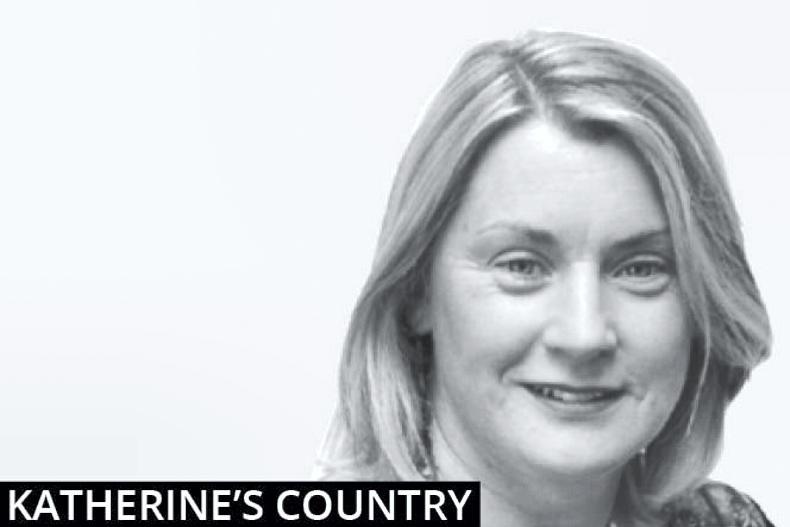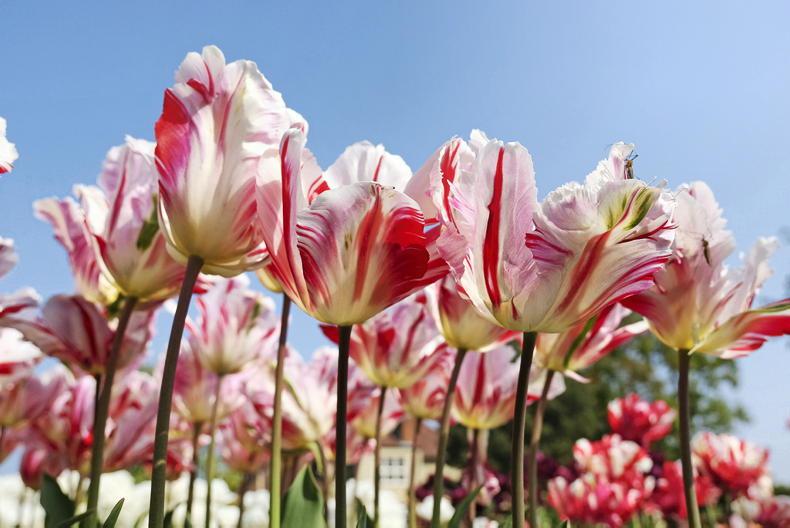Tim dropped into the kitchen.
“I’ve loads of wires to close after the fertiliser spreading. Do you want to come for the spin and pick a bunch of daffodils?”
Despite plenty housework to be done, I hadn’t been out the fields in ages and the daffodils are always a sight to behold. Tim brings bunches home every couple of days. They are magnificent.
At the start of the week, Niall Helen (Ricky’s uncle) had limed several fields on the farm, including the Two Inches. He had spread 100 tonnes of lime. All the fields had been grazed before being limed. These fields are always a challenge, because they tend to be heavy. Hence, they have to be grazed and managed carefully.
It was a cause of great excitement for three-year-old Ricky. The next big job was fertiliser. Gearóid Harrington was coming to spread fertiliser with his big machine. In order to mind the clover on the farm, it is important to keep the pH as near to 7 as possible and Index 4 for phosphorous (P) and potassium (K).
I think of fertiliser as being a straightforward job, but it is not at all. The discussion was had around the breakfast table. What would be spread where had to be decided. Urea would ordinarily be the obvious choice, but lime having been spread changed that. Apparently, straight urea cannot be spread for three months after ground has been limed, but protected urea can be put out. So there was urea for some fields and protected urea for others. Tim recorded it all in his diary. Our aim is to continue to lower the amount of chemical fertiliser we are using all the time.
Farmyard manure was put out on a support piece of ground a few miles away to enhance the P and K. These nutrients would have been depleted from continuous harvesting of low covers of top class clover and grass for silage bales. It is perfect feeding for the milking cows during the buffer periods when grass growth is slow. Adrian O’Mahony and his team were around as well spreading dirty water and slurry with the low emission slurry spreader. Farmers are wonderful the way they are following the Teagasc advice and using technology and science to protect the environment. It’s really important that we continue to tell that story.
Apparently, straight urea cannot be spread for three months after ground has been limed, but protected urea can be put out
Picking daffodils
Off we went on our trip. Tim closed his wires and gave me a running commentary on the grazing to date. The month of February and eight days into March had remained dry. There isn’t a mark on the fields from the cows. Grass growth has been steady and cows have been out day and night since they calved. We arrived to the daffodil plot, which is part of the field known as the Pylon (just because there’s a pylon in it). The daffodils take my breath away every time. They come more abundantly and more spectacular every year. There are several varieties, late and early, singles and doubles. I always think about the hands that planted those daffodils - probably one hundred years ago.
This particular place was an old orchard of a big house. Bulbs are special and continue giving enjoyment every season. Tim minds them carefully, fencing the cows out from them until the blooms are gone. It’s well worth the effort.
We picked some daffodils and the dogs ran around. Back in the kitchen we replenished the vases.
Weather warnings
Rain and snow was promised. On 9 March, I think we realised just how lucky we had been. We’ve reared heifers to nearly six weeks of age without any real cold weather and no wet weather at all. I guess it’s the perk of living in the south of the country. That morning, walking from the house to the yard, there was driving sleet and a bitter wind blowing from the west. It felt as if it was passing right through us. That night, the wind curled around the house and howled all night long. In the morning, calmness had returned again and hopefully the temperatures will also rise.
Spring rotation planner
Last week, we’d 43% of the farm grazed following the Teagasc Spring Rotation Planner. We will be grazing 1,300kgs of grass dry matter/day or one hectare with the cows in order to get to 66% grazed by St Patrick’s Day.
Enjoy St Patrick’s Day.
Read more
Katherine's Country: Ricky and his books
Katherine’s Country: American visitors
Tim dropped into the kitchen.
“I’ve loads of wires to close after the fertiliser spreading. Do you want to come for the spin and pick a bunch of daffodils?”
Despite plenty housework to be done, I hadn’t been out the fields in ages and the daffodils are always a sight to behold. Tim brings bunches home every couple of days. They are magnificent.
At the start of the week, Niall Helen (Ricky’s uncle) had limed several fields on the farm, including the Two Inches. He had spread 100 tonnes of lime. All the fields had been grazed before being limed. These fields are always a challenge, because they tend to be heavy. Hence, they have to be grazed and managed carefully.
It was a cause of great excitement for three-year-old Ricky. The next big job was fertiliser. Gearóid Harrington was coming to spread fertiliser with his big machine. In order to mind the clover on the farm, it is important to keep the pH as near to 7 as possible and Index 4 for phosphorous (P) and potassium (K).
I think of fertiliser as being a straightforward job, but it is not at all. The discussion was had around the breakfast table. What would be spread where had to be decided. Urea would ordinarily be the obvious choice, but lime having been spread changed that. Apparently, straight urea cannot be spread for three months after ground has been limed, but protected urea can be put out. So there was urea for some fields and protected urea for others. Tim recorded it all in his diary. Our aim is to continue to lower the amount of chemical fertiliser we are using all the time.
Farmyard manure was put out on a support piece of ground a few miles away to enhance the P and K. These nutrients would have been depleted from continuous harvesting of low covers of top class clover and grass for silage bales. It is perfect feeding for the milking cows during the buffer periods when grass growth is slow. Adrian O’Mahony and his team were around as well spreading dirty water and slurry with the low emission slurry spreader. Farmers are wonderful the way they are following the Teagasc advice and using technology and science to protect the environment. It’s really important that we continue to tell that story.
Apparently, straight urea cannot be spread for three months after ground has been limed, but protected urea can be put out
Picking daffodils
Off we went on our trip. Tim closed his wires and gave me a running commentary on the grazing to date. The month of February and eight days into March had remained dry. There isn’t a mark on the fields from the cows. Grass growth has been steady and cows have been out day and night since they calved. We arrived to the daffodil plot, which is part of the field known as the Pylon (just because there’s a pylon in it). The daffodils take my breath away every time. They come more abundantly and more spectacular every year. There are several varieties, late and early, singles and doubles. I always think about the hands that planted those daffodils - probably one hundred years ago.
This particular place was an old orchard of a big house. Bulbs are special and continue giving enjoyment every season. Tim minds them carefully, fencing the cows out from them until the blooms are gone. It’s well worth the effort.
We picked some daffodils and the dogs ran around. Back in the kitchen we replenished the vases.
Weather warnings
Rain and snow was promised. On 9 March, I think we realised just how lucky we had been. We’ve reared heifers to nearly six weeks of age without any real cold weather and no wet weather at all. I guess it’s the perk of living in the south of the country. That morning, walking from the house to the yard, there was driving sleet and a bitter wind blowing from the west. It felt as if it was passing right through us. That night, the wind curled around the house and howled all night long. In the morning, calmness had returned again and hopefully the temperatures will also rise.
Spring rotation planner
Last week, we’d 43% of the farm grazed following the Teagasc Spring Rotation Planner. We will be grazing 1,300kgs of grass dry matter/day or one hectare with the cows in order to get to 66% grazed by St Patrick’s Day.
Enjoy St Patrick’s Day.
Read more
Katherine's Country: Ricky and his books
Katherine’s Country: American visitors









SHARING OPTIONS